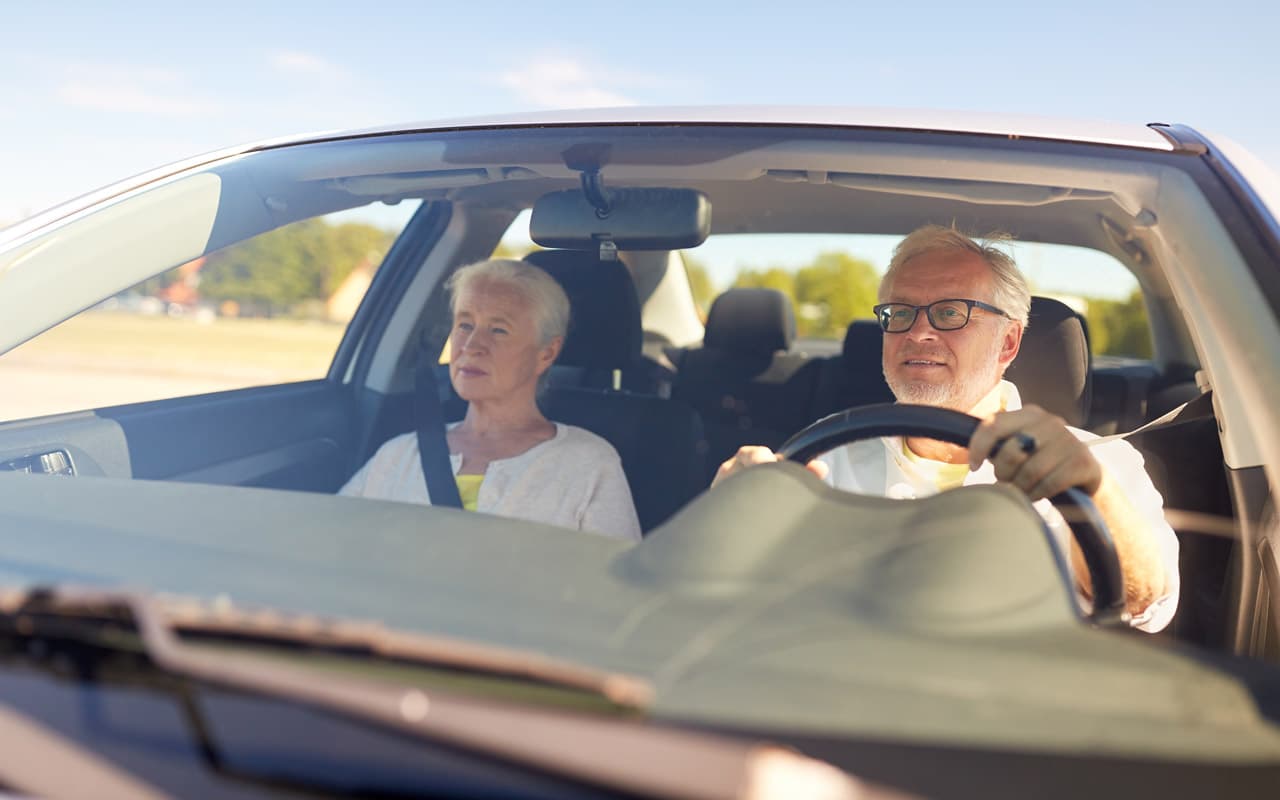Many people take being able to travel for granted — whether it’s to a new country or just to get out of the house. But if you’re managing a mobility issue, it can be tricky to navigate, even with the support of a caregiver.
Don’t let a mobility issue stop you or a loved one from exploring the places on your bucket list. Read on for our top tips to prepare for and enjoy travel safely and enjoyably.
Who Struggles With Mobility Issues Most?
As we get older, the chance of experiencing mobility issues increases. Studies show that about 30% of older adults ages 65 and above have mobility limitations. These are often caused by chronic conditions such as arthritis or long-term respiratory problems.
But, it’s not just the elderly who struggle. 61 million adults in the U.S. live with a disability of some kind, and of those, 13.7% have mobility issues. Though limited mobility certainly presents a unique challenge, it’s best to try to stay as active as impossible.
Why an Active Life is a Healthier One
Mobility issues are often associated with pain. If you’re dealing with an issue yourself, you probably know this all too well. Backs, knees, and ankles are the most “at-risk” areas of the body for pain and inflammation, ranging from low-level to very debilitating.
Naturally, discomfort can discourage a person from living an active lifestyle. A common consequence of this? Withdrawal from social interactions. And, over time, restricted mobility can lead to further weakness or balance issues.
So what can you do about it?
While there’s no magic cure, engaging in smaller activities (and scaling activity levels up gradually) is an important step. Simply traveling around your neighborhood and doing various activities outside of the home can go a long way to maintaining quality of life, reducing stress and easing pain.
From taking a trip on the bus into town to visiting local attractions, here are some tips to help you get around more easily with limited mobility.
Meet up with friends: If you’re visiting somewhere local, a great strategy to start is to ask people you know if they’d like to come along. There’s strength in numbers, and they might know of a few “hidden gems” to visit that you hadn’t necessarily considered.
Research your options for public transport: Public transport is extremely useful, but it can be hit or miss. Some areas of the country may not have public transport accessibility, due to being too rural. Planning to get the bus? It’s wise to call ahead and see if they have ramp accessibility (if needed). And if you plan to use a train or the subway, ask if there is someone available on the platform to help you get on and off.
Know when it’s time to go home: Even if the trip is local, it doesn’t mean it won’t take up energy. As tempting as it may be, try to make sure you don’t overdo it. Plan one main activity each day, and carve out time to rest and recuperate. It’s better to do less and enjoy it than spread yourself too thin.
How to Plan for Trips With Someone Who Has Mobility Issues
This section is for families or friends, so feel free to skip ahead if it’s not relevant. Before you start your next adventure, preparation is key for ensuring a comfortable, fun trip. Here are a few top tips to get ready:
1. Have a chat with your loved one about their mobility limitations. If you’re caring for someone who struggles with balance or pain, you’ll know it may be hard for them to walk uphill, on uneven ground, or manage flights of stairs.
2. Research the area. Whether local or long-distance, research whether the area suits their mobility level. Does the location have accessibility for a wheelchair if they get tired? Is there enough seating? Is parking close to the location you want to visit?
3. Don’t be afraid to follow up. If you’re uncertain about anything, call the venue or transportation manager for more information. There’s nothing worse than feeling your loved one is unsafe because of something unexpected.
4. Figure out your support options. Some locations allow you to rent mobility scooters or equipment, while others can provide you with a guide. Getting extra help is nothing to be ashamed of and can help you enjoy the visit with much less stress.
5. Book in advance and tell them about your loved one’s needs. Whether it’s a train ticket, flight, or hotel, inform them if your loved one has accessibility needs so they can make preparations in advance.
Traveling Abroad or Long-Distance With Mobility Issues
Traveling long-distance with someone who has mobility issues can be daunting. Here are some tips to bear in mind:
Leave extra time. Planes and group excursions don’t tend to wait, even for those with mobility issues. So, it’s wise to keep some time spare between activities to make sure you don’t miss them. It goes without saying that you don’t want to feel constantly rushed on a trip that’s meant to be relaxing.
Get the right medication in place. Pain can prevent you from enjoying your trip, or even cut it short. Some people with mobility issues take pain management medication with them, should they have a flare-up. Keep in mind that certain countries and airlines have strict rules on the medication you can or cannot bring. You may have to get a medical certificate or sign paperwork before your trip, or pack most of the medication in your main luggage. Ask the airline you book with what their rules are with regards to taking medications (particularly liquid medications) on board.
Have a contingency plan. There are always going to be bumps in the road when something unexpected comes up. Wherever possible, try to have back-ups or alternatives in place when planning for an upcoming trip. For example, if the activity you booked isn’t as accessible as you thought, have a list of other options so you don’t waste the day researching.
Plan rest days. Traveling can be tiring for people with and without mobility issues. It’s a lot of new sights, sounds, and experiences to take in. Knowing you have a day or two to kick back and relax can make a world of difference. Trips abroad will go much smoother when everyone feels well-rested and relaxed.
Pro tip:
Book a hotel that has on-site activities or areas to enjoy. That way you can still pack in some fun and be entertained on any of the days you need to stay in.
Ask for medical advice. If you’re unsure of what your physical limits are, whether it’s safe to travel or how far to “push it” when it comes to activities, make sure you speak with your doctor. They can advise you on what to avoid and offer support where needed. What’s more, they’ll be able to help you with any special documents that you need to prepare for trips abroad.
Best Products for Traveling With Limited Mobility
Packing can be a huge task for trips like these, so we wanted to make it a little simpler. Here’s a run-down of various products that can make your trips more comfortable.
Ankle sleeves and arthritis gloves
Products such as ankle sleeves and arthritis gloves are really easy to use and are designed to help with pain management. Ankle sleeves are made of stretchy fabric, giving you protection, ample compression, and support. They may also help to relieve swelling, making them a great choice for people suffering from arthritis and tendonitis.
ProCare Ankle Sleeve
Arthritis gloves are a similar product. They can also help with swelling, stiffness and pain, and some may experience better grip strength after using them.
IMAK Compression Arthritis Glove
Elbow protector pads
Elbow protector pads may be a sensible purchase if you are worried about falls. On outdoor surfaces like sidewalks, there isn’t much give. As a result, impacts on the elbow bones and joints can be severe.
Protector pads are padded and “hook and loop” for secure placement. This can offer peace of mind for those who have disabilities with involuntary movements and may be at risk of bashing their elbows on tables or nearby objects.
McKesson Elbow Protector Pads
Walker with wheels
Walkers with wheels are a practical purchase for extra stability and taking some of the pressure off of the lower body. They can help people with mobility issues to feel confident and move around with more freedom.
McKesson Aluminium Folding Walker with Wheels
Top Tip: You can also get walker glide skis to add to an existing walker for smoother transportation.
Staying Safe When Traveling With Someone With Mobility Issues
Preventing injuries is obviously a top priority, for both the person with limited mobility and the caregiver. Here is a list of things we’d recommend to keep safe while you’re on the road:
1. Protect against manual injuries. There may be a lot of lifting and bending movements involved on longer trips. Try to avoid repetitive injuries and don’t be afraid to ask for help. One option is to use a gait belt, which can make getting in and out of cars or awkward spaces much easier and prevent falls for those with weakened muscle strength. They also ensure that caregivers can stay safe. Lifting from the belt is much safer than straining arms or wrists. This reduces the likelihood of an injury to the caregiver or person with limited mobility.
McKesson Gait Belt
2. Get medications in order. It’s one thing getting permission to take medication abroad, and another remembering to take them when you’re out of routine. Keeping on top of it all can be a challenge. Before you leave, get all of your medication in order — pill organizers are truly wonderful for this!
Mediplanner Pill Organizer
1. Take medical records and paperwork with you. Although you can do everything to prevent it, if you are unlucky enough to have an accident or fall, make sure your paperwork is on hand. Keep a list of your medications in a coat pocket or a bag, as well as a copy of any important information that you can give to the medics on site.
Pro tip: If you have any specialized equipment, it can be wise to get travel insurance for it to cover any loss or damage when you go abroad.
With the right preparation, the right products, and the right support, mobility issues don’t need to hold you back from traveling. Planning in advance and starting small can alleviate much of the stress.
If you need help choosing the best products for traveling, feel free to call the Carewell support team at (800) 696-CARE or email us at support@carewell.com.




